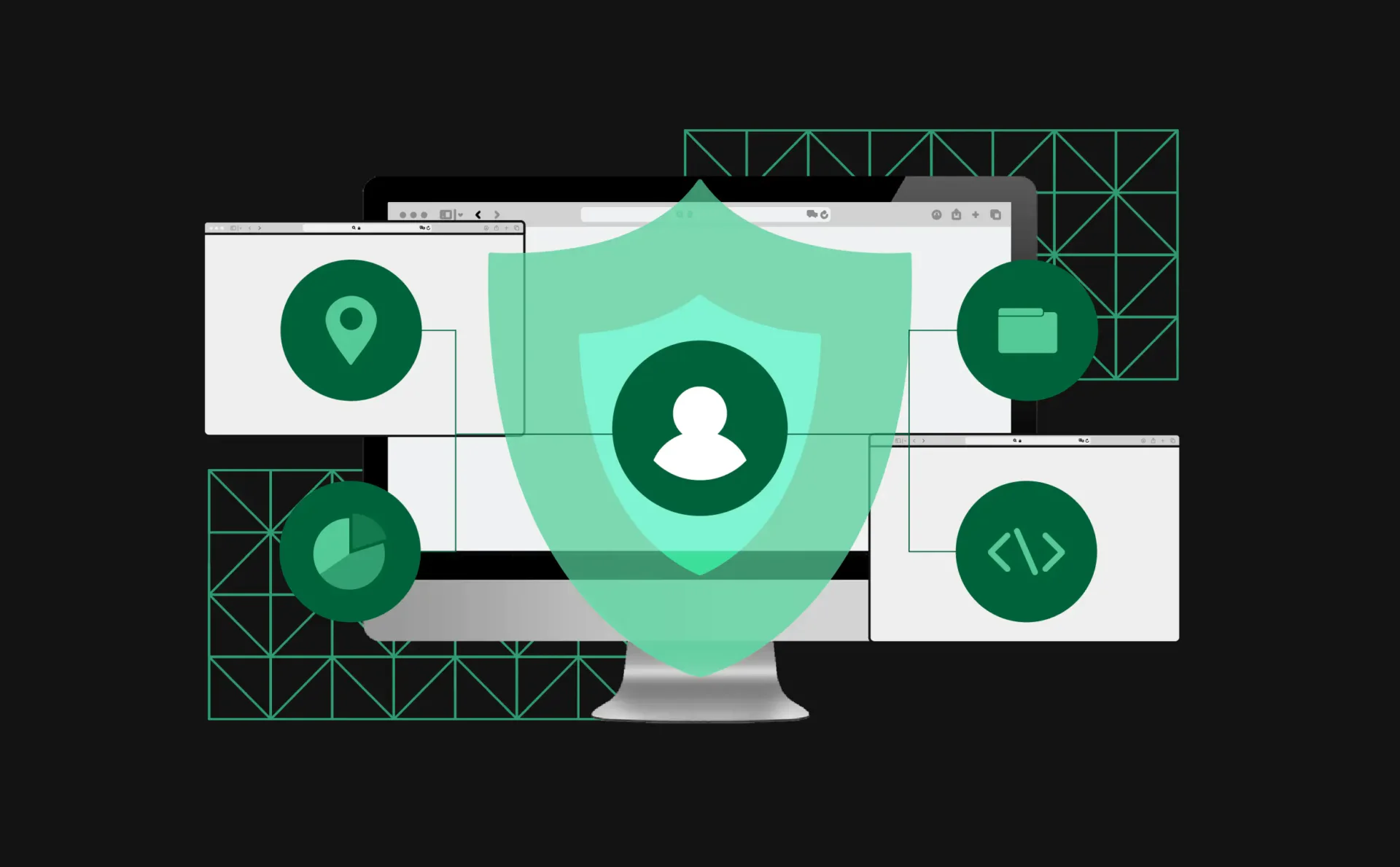
Best proxy for web scraping – Top 5 Picks
If you’ve ever tried scraping a website without a proxy, you already know how fast things can go wrong. A few requests too many, and suddenly you’re staring at a “403 Forbidden” page. That’s your IP getting flagged. It doesn’t matter if you’re pulling product prices, SEO data, or social media insights — without the right proxy, every scrape feels like walking on eggshells.
The best proxy for web scraping isn’t just about speed or price. It’s about staying invisible — sending thousands of requests without websites catching on. It’s the difference between collecting clean data and getting blocked halfway through your project.
Below are the top 5 proxy providers trusted by scrapers who actually know the pain of bans and timeouts. These picks aren’t hype. They’re the ones that keep your bots alive, your sessions stable, and your data flowing.
NodeMaven
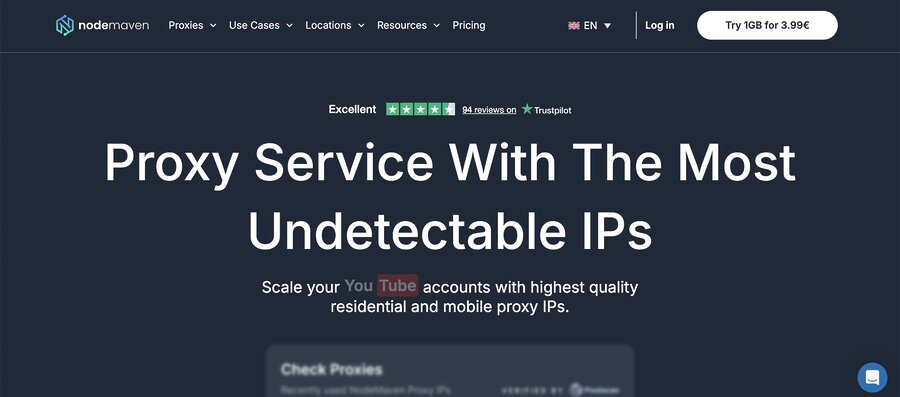
If you’ve ever watched your scraper crash right when it starts collecting real data, you’ll understand why NodeMaven feels like a relief. It doesn’t flood you with millions of random IPs — it gives you clean ones that last. The IP Quality Filter sorts through junk and keeps only high-trust residential IPs that actually work. You can run sticky sessions for hours without constant switching or sudden blocks. That means you can keep scraping, collecting, or running your automation without babysitting it every ten minutes.
When you want to run advanced web scraping, NodeMaven is one of the best choices. When your project depends on staying active across multiple sites without raising flags, these features make a difference:
- Sticky residential sessions that stay stable during long scraping runs.
- 95% clean IP pool tested in real-time to avoid flagged or recycled addresses.
- Traffic roll-over so unused data isn’t wasted at the end of the month.
- Geo-targeting options to collect localized results or simulate user behavior from different countries.
- A simple dashboard that lets you scale quietly without paying for more than you need.
Bright Data
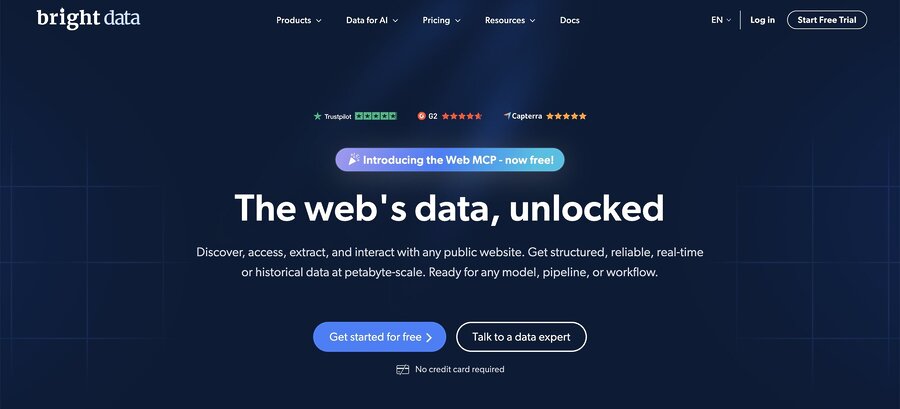
If you’re scraping at scale and a single block can ruin your data run, Bright Data is the kind of proxy you rely on. It’s built for heavy-duty scraping jobs — price monitoring, ad verification, market tracking — the things that can’t stop halfway. With millions of residential IPs across nearly every country, you can collect local results without tripping alarms or triggering rate limits. Every request feels like it’s coming from a real person, not a bot. And if you ever get flagged, Bright Data’s granular proxy manager lets you rotate or customize IPs instantly to get back online fast.
What makes it stand out for serious web scraping:
- Over 70M+ residential IPs across 190+ countries for accurate geo-targeted data.
- 99.95% uptime with stable, long scraping sessions that rarely break.
- Built-in tools like Cached Pages to cut bandwidth use on repeat queries.
- Fast, responsive support — you actually get a human reply in minutes.
- Strict GDPR and CCPA compliance for teams that can’t risk shady sourcing.
NetNut
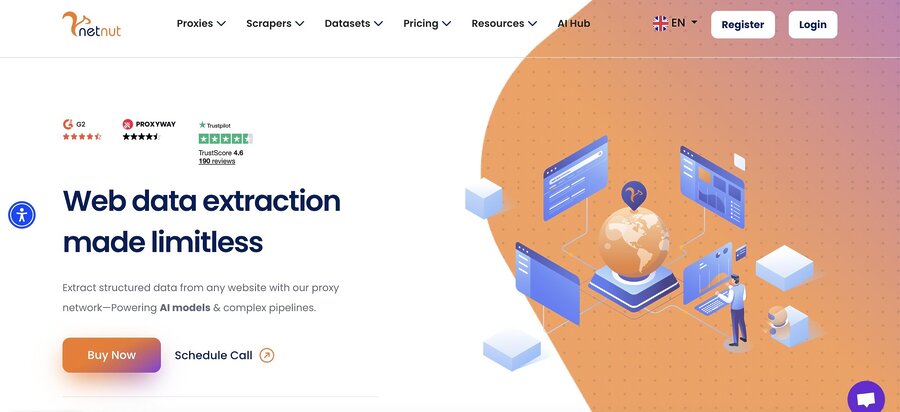
If you’ve ever watched your scraper crash mid-run because a proxy burned out or got flagged, NetNut feels like a fix you’ve been waiting for. Its proxies come straight from ISPs — not random peers — so connections stay clean and stable for long sessions. That’s why many scrapers rely on it for real-time data pulls, ad checks, and price monitoring at scale. The one-hop architecture keeps latency low, and the IPs don’t rotate unnecessarily, so you can scrape for hours without losing your session or tripping a CAPTCHA wall.
Here’s what makes NetNut a strong pick for scraping:
- ISP-sourced static residential IPs that stay live through long scraping sessions.
- 85M+ IPs across 200+ countries to pull region-specific data fast.
- Hybrid ISP + P2P network to keep performance stable even under heavy loads.
- Built-in CAPTCHA bypass and sticky sessions for uninterrupted data flow.
- Real-time proxy usage stats so you can track and tweak without guessing.
Decodo
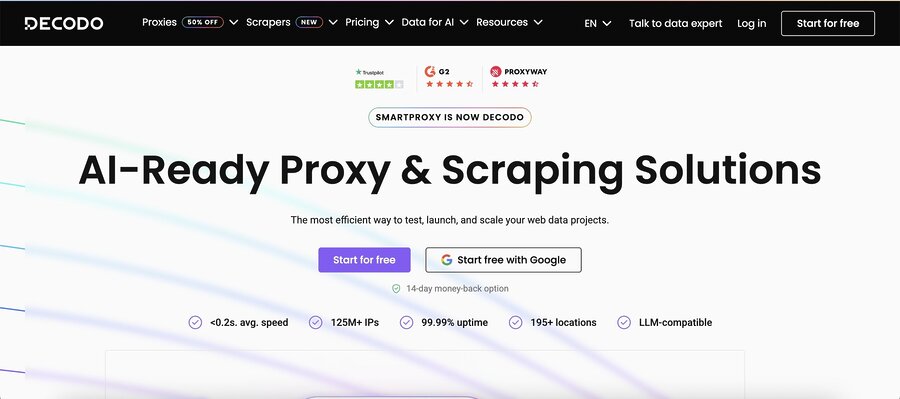
When your scraper runs on a tight schedule and every second counts, Decodo delivers. Its sub-0.5s response time means your data starts flowing almost instantly — no waiting, no lag. The IPs come from trusted providers like Sprint and Frontier, giving you real residential quality instead of unstable peer connections. You can run unlimited threads, manage dozens of scrapers, and still keep response times steady. If you get banned mid-scrape, just switch to a new rotating session and pick up right where you left off — no data lost, no wasted time.
Why scrapers choose Decodo for web data extraction:
- Sub-0.5s response times for real-time scraping and monitoring.
- Clean, high-quality IPs from major internet carriers.
- Static proxies that can hold “forever sessions” for continuous tasks.
- Rotating options for switching IPs instantly after blocks.
- Free add-ons on every plan — no paywall for essentials.
- City- and ZIP-level targeting for precise, localized scraping.
SOAX

If your scraper keeps getting flagged after a few hundred requests, SOAX changes the game. Its mix of 3G, 4G, and 5G mobile proxies gives your setup the flexibility to look like real traffic — not automated scripts. You can control how long an IP stays active before rotating, helping you scrape huge datasets without leaving a trace. With over 150 million residential and mobile IPs worldwide, you can pull data from almost any region without getting rate-limited or banned mid-run.
Here’s why scrapers trust SOAX for heavy web data jobs:
- 30M+ mobile IPs (3G, 4G, 5G) with custom rotation timing.
- 155M+ residential IPs across 195+ countries for deep geo coverage.
- Web Optimizer tech that reduces errors and keeps sessions stable.
- Unlimited concurrent sessions — no limits, no throttling.
- City-level targeting for cleaner, localized data collection.
What is a web scraping proxy?
A web scraping proxy is what stands between your scraper and a website’s security system. It hides your real IP and gives you new ones — so each request looks like it’s coming from a real user, not the same machine making hundreds of calls in a row. Without proxies, most scraping jobs don’t last long. The site will notice too many requests from one IP, slow you down, or block you altogether.
With web scraping proxies, every request can go through a different IP address. That means you can pull thousands of pages, prices, or reviews without raising flags. If one IP gets banned, you can rotate to another in seconds and keep the data flow running. Proxies turn scraping from a guessing game into a system — one that keeps you collecting data while staying invisible to detection tools.
How to choose the best proxy for web scraping
Choosing the right proxy isn’t about chasing the biggest IP pool — it’s about finding what keeps your scraper alive. Some providers look good on paper but fail the moment you hit rate limits or CAPTCHAs. You need a proxy that fits your task, scales with your traffic, and works cleanly with your scraping setup. If your goal is to collect data daily without bans, test providers the same way you scrape: run, stress, and see which one holds steady.
Look for these when picking a proxy provider:
- Use case fit: Choose residential proxies for large-scale scraping, datacenter for speed-heavy scripts.
- Pricing model: GB-based if you run high-volume scraping, IP-based for consistent long sessions.
- Success rate: Anything below 95% is a red flag — it means your scrapes will keep breaking.
- Rotation control: You should decide when IPs switch, not the provider.
- Tool compatibility: Make sure it works with your scrapers — Python, Puppeteer, or Selenium.
- Real testing option: If they offer a short trial, use it to see how their proxies survive actual scraping pressure.
What are the common scraping challenges and how proxies solve them
Every scraper hits the same wall sooner or later — CAPTCHAs, IP bans, broken sessions, or painfully slow response times. You start pulling data fine, then the site tightens its filters, and suddenly you’re blocked. That’s where proxies step in. They don’t just hide your IP; they help you look normal in the eyes of websites that are built to detect bots. When a site flags one IP, your scraper can instantly switch to another and keep working like nothing happened.
Here’s how proxies fix most scraping headaches:
- CAPTCHAs: rotating proxies reduce repeated patterns that trigger CAPTCHA checks.
- IP bans: when a site blocks your IP, a fresh one replaces it so your scraper keeps running.
- Rate limits: proxies spread requests across multiple IPs, so no single one gets flagged for sending too many.
- Geo-blocks: residential proxies from specific countries help access region-locked data.
- Slow scraping: high-quality proxies cut latency, letting your scraper pull data faster and cleaner.
With the right proxy setup, scraping stops feeling like a fight — you control the flow instead of reacting to bans.
FAQ
What is the best proxy for web scraping when I’m just starting out?
When you’re just starting your scraping journey, you want the best proxy for web scraping that won’t throttle you or get you blocked after a handful of requests. Look for a provider with decent rotation, solid uptime, and budget-friendly pricing. If you get banned, you can try switching IPs, rotate your sessions more often, and test the provider during low-traffic hours.
Why should I use one of the best proxies for web scraping instead of free proxies?
Using free proxies might seem tempting, but they often come with slow response times, low reliability, and high risk of bans. One of the best proxies for web scraping offers consistent performance, high success rates, and better stealth. If you get banned using free or weak proxies, switching to a paid provider that focuses on scraping traffic can save you hours of frustration.
How do I compare the best proxy providers for web scraping before committing?
When you compare the best proxy providers for web scraping, focus on how they handle rotations, their IP pool size, and their track record with scraping tools. Ask yourself: Will this provider let me run many threads? Does it support my region? What’s its failure rate? If you get banned once, check how fast you can swap to another IP or plan without disrupting your data flow.
Can the best proxy for web scraping help me avoid CAPTCHAs and blocks?
Yes — a well-chosen proxy can help you avoid CAPTCHAs and blocks by distributing requests across clean and trusted IPs. The best proxy for web scraping uses rotation and high-trust residential or mobile IPs so your traffic looks like real users. If you still hit a CAPTCHA, you can trigger an IP switch, throttle your rate, or segment your target sites to reduce detection risk.
What features should I expect from the best proxy providers for web scraping?
From the best proxy providers for web scraping, expect features like wide country coverage, control over IP rotation, detailed stats on success rates, and compatibility with your scraping tools. Another big plus is live support to help when blocks happen. If you get banned, these features let you adapt quickly: change IPs, adjust your request rate, or modify headers without rebuilding your script.
Conclusion
Scraping is only as strong as the proxies behind it. You can build the best setup, write the cleanest script, and still get shut down if your IPs aren’t trusted. The best proxy for web scraping is the one that keeps you invisible while letting your scraper breathe — sending hundreds or thousands of requests without triggering alarms.
NodeMaven gives you clean, sticky IPs that survive long sessions. Bright Data delivers enterprise-level consistency and global reach. NetNut focuses on raw speed and ISP-grade reliability. Decodo wins on responsiveness and control, while SOAX brings unmatched mobile coverage. Each has its edge, but the goal stays the same — scrape freely, avoid bans, and keep your data pipeline stable.
If your scraper keeps hitting walls, switching to one of these proxy networks can change everything. Test them, track your success rate, and stick with the one that lets you scrape like a human, not a target.